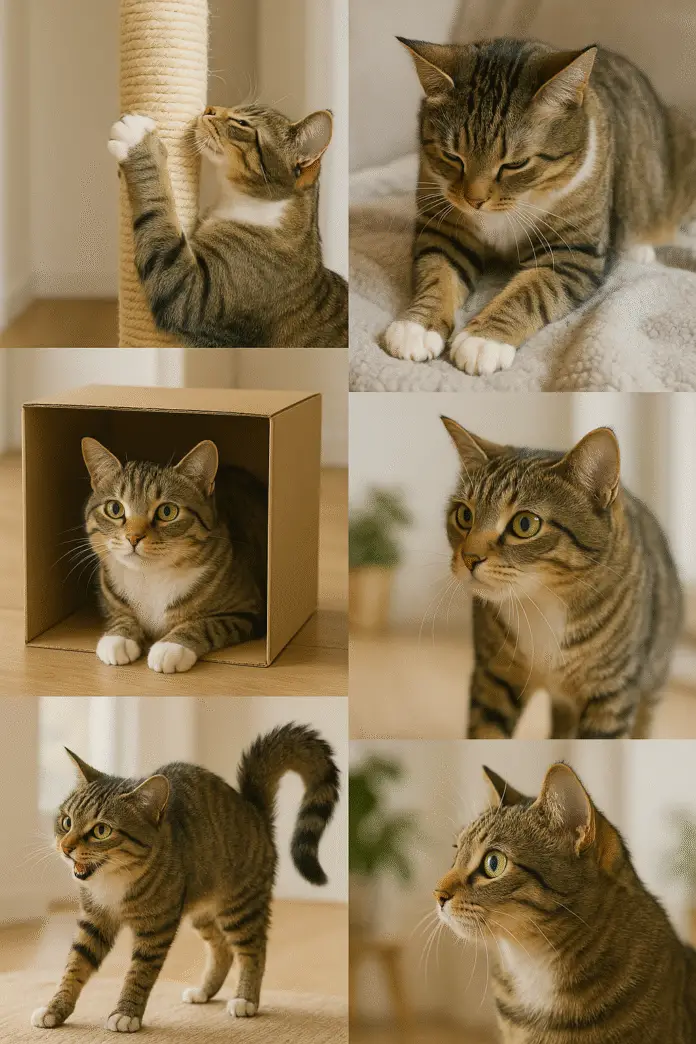Cats have always fascinated and intrigued people due to their mysterious nature, independence, curiosity and many other confusing actions. However, as much as we adore our cats, we often find it confusing to decode the animals’ behavior. From kneading to purring to the notorious zoomies, every action of a cat is meaningful, and we will explore those meanings in this blog post. We will provide you with some insights into the interesting world of cat behavior, which will undoubtedly make it easier for you to understand your pet’s needs and instincts if you read our article.
What Cats’ Ancestral Behavior Tells Us
The domestication of cats is not yet completely understood, which is why it is advisable to go back to the origins if we want to comprehend pets’ behavior fully. The conspecific of various species was also influenced by the lifestyle and behavior of animals of the same species that lived in proximity to them. The domestication of the cat (Felis catus) was a gradual process from its place of origin, the Middle East, caused by the migration of people and the development of agriculture.
Modern cats have evolved various ways of adapting to a life in the human household, without, however, losing all of their feral behaviors. They guided by human behavior will continue to exhibit feral traits like toy-hunting, furniture-scratching exercises, and constant search for hideouts for sleep — all activities that their ancestors would have done in the wild.
Common Cat Behavior: Unravelling the Mystery
1. Purring
Purring is commonly seen as an expression of happiness, yet cats also purr when they are stressed, unwell, or in pain. It is an act of self-comforting. Interestingly, the purring process can be a healing mechanism that comes along with the vibrations of the corresponding frequency (25-150 Hz)
When to be concerned: If the sign of stress, illness, or injury is shown by your purring cat, e.g. hiding, limping, less appetite, ask a vet for help.
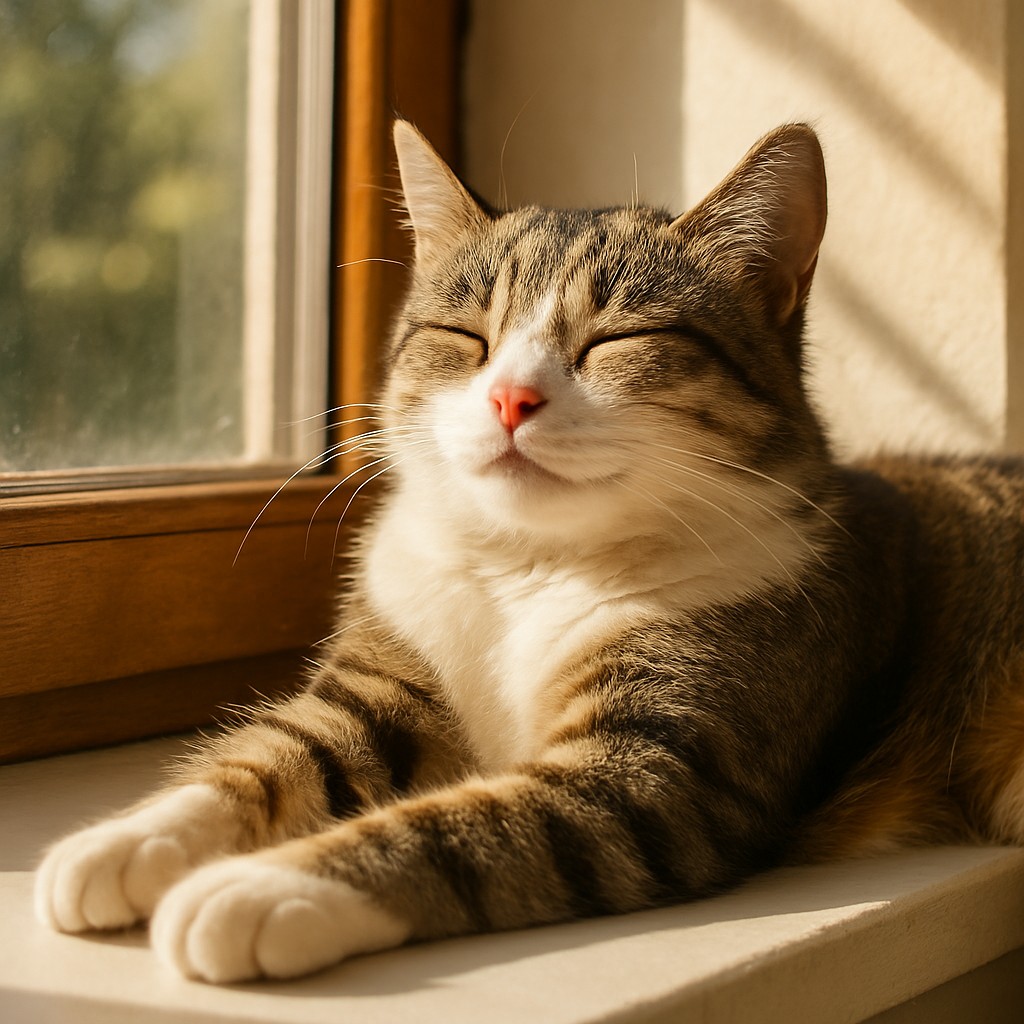
2. Kneading
Kneading is the rhythmic pressing of their paws against something soft. Little kittens are kneading the mums to stimulate a milk flow. Adult cats practice this behavior yet since it is comforting. Cats can knead soft blankets, your lap, or even another pet.
Why they do it: It may be an atavism or an act of territory marking, as there are scent glands in their paws.

3. Scratching
Scratching not only keeps a cat physically fit but is also a good exercise for the cat’s emotional well-being. It helps to get rid of the old layer of the claws, stretches muscles, and leave spiral, vertical scratches which are both visual and scent tags.
Ways to stop the cat from scratching destructively: Provide your cat with sisal or cardboard scratching posts and place them near places they are scratching. When they use the posts, praise them.
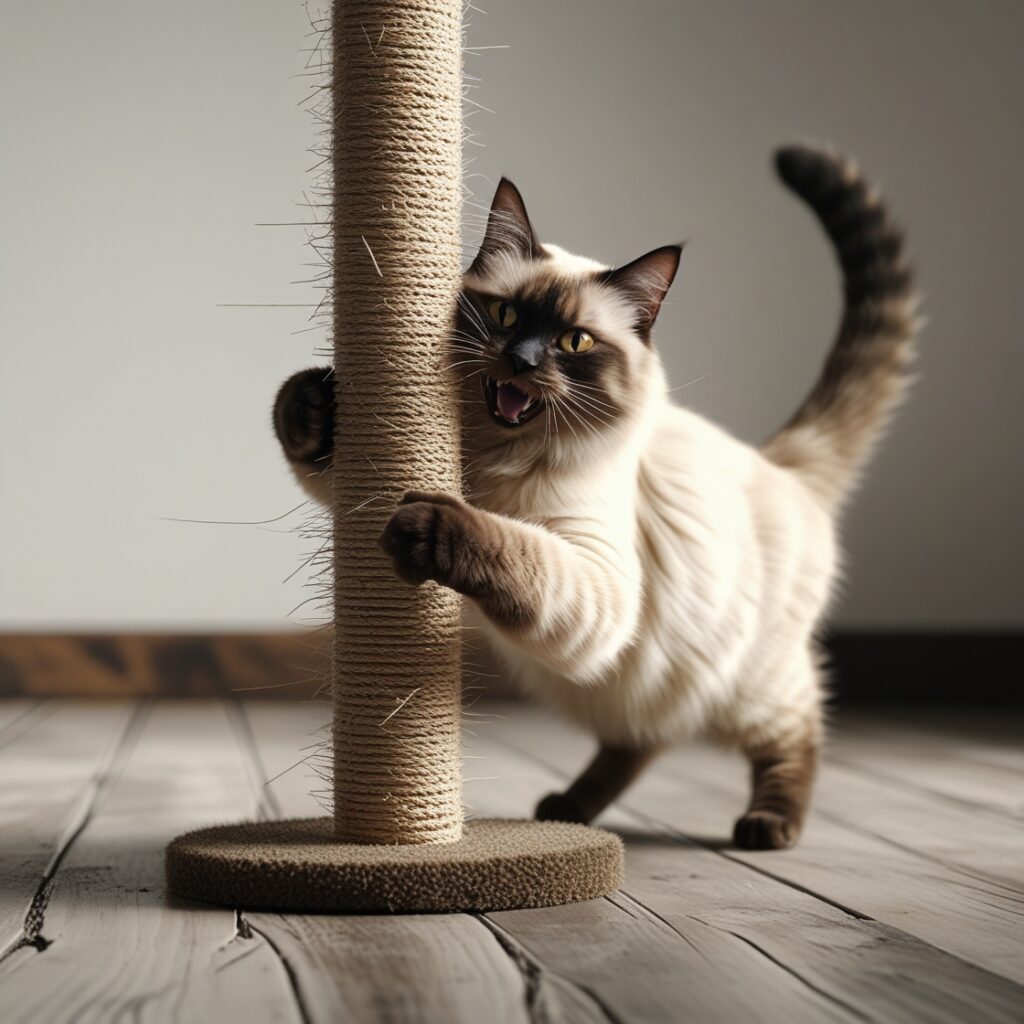
4. Zoomies (Midnight Madness)
Is your cat autonomously running around the house at high speed, especially at night? These “zoomies” are usually a result of pent-up energy release. As you may know, cats are most active at dawn and dusk, so they are getting their energy out.
What will be better: Schedule some time for playing, especially in the evenings. In addition, a toy reflecting hunting behavior would also be a perfect choice in the present situation.
5. Headbutting and Rubbing
Cats have the pheromone glands on their cheeks and foreh ead. When they rub or headbutt you, they are in fact marking you with their scent, in other words, giving you a visit and at the same time claiming you as part of their territory. This mar king-bonding behavior is also a sort of trust-building gesture.
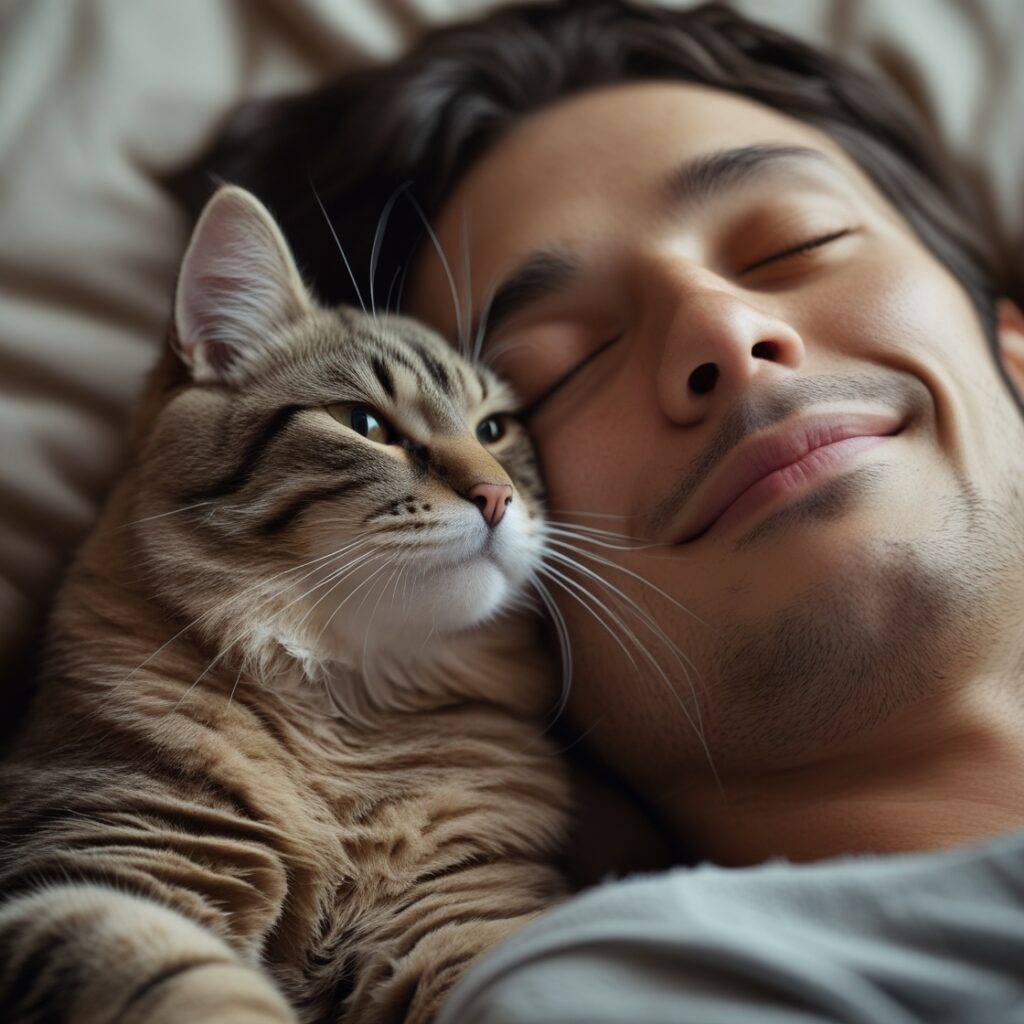
6. Tail Talk: Decoding Cat Emotions
The tail is the most powerful means of expressing feelings. What each of these tail positions usually indicates is the following:
- Upright with slight Curl: Happy and confident
- Puffed up: Frightened or angry
- Low or Tucked: Scared or anxious
- Swishing rapidly: Annoyed or agitated
- Wrapped around Another Cat or Your Leg: Friendly and affectionate
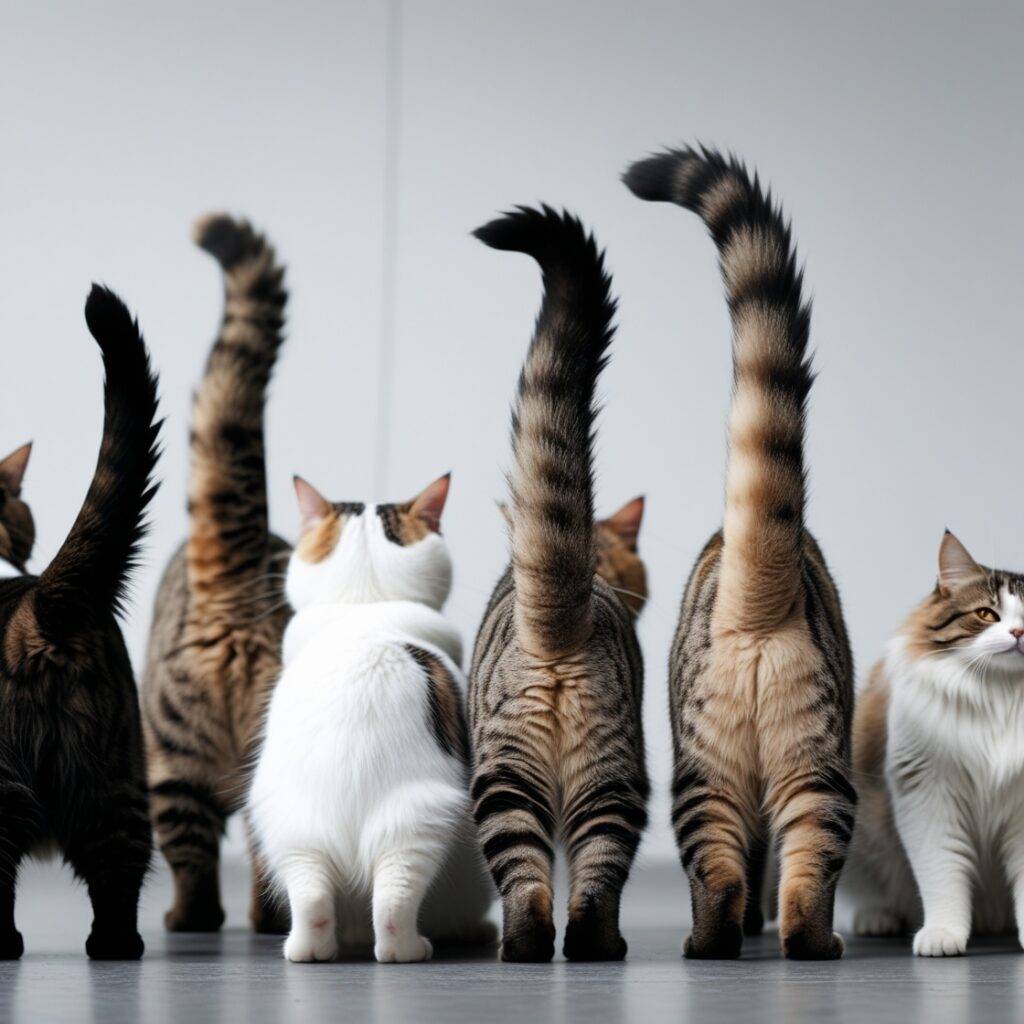
Less Common but Important Behaviors
Hiding
When cats are scared, sick, or stressed, they usually hide. Occasional hiding is normal, but sudden withdrawal or change of behavior may indicate that your cat is not well at all.
Chattering
When cats are looking at birds or squirrels from the window, they sometimes produce a very strange chattering noise (“clip-clop”). This is believed to be an expression of excite ment or frustration, or maybe the source of an instinctive reaction of them before they “kill.”
Bringing You “Gifts”
Cats that are allowed to roam outside the home might bring back the bodies of dead mice or birds. This action might not make you feel comfortable but in reality, the cat just wants to share his/hers victory with you, a behavior he/she had inherited from his/her ancestors.
How to Strengthen Your Bond Through Behavior
Knowing and interpreting the body language and behavior of your cat can empower the two of you to live in perfect harmony. Following are some ways to establish a better relationship of understanding and trust:
- Enrichment gives encouragement: Climbing shelves, puzzle feeders, and rotating toys.
- Let them be: Don’t get too close to your cat and don’t pet them if they don’t ask for it. Patience is one of the most important virtues of relationship building = Let your cat be your guide to where and how he/she wants to play.
- Your cat won’t notice changes in your schedule and will always be alert and happy if every day, at the same time, you play with him and feed him.
- Appreciation is the best way to foster relationships: By using treats to reward them for their good behavior as opposed to punishing them when they are bad.
Common Misconceptions
- Cats being seen as aloof are not always true; some are very dependent and close to their owners.
- Cats simply scratch as a way to show off their sharp claws, it is not that they are doing it in a personal manner.
- Cats do not play a vital role in pet’s life: The games act as a substitute for hunting. At the same time, they tend to relieve stress and reduce inappropriate behavior.
When Behavior Signals a Problem
Behavior changes might mean that a cat is facing certain health issues:
- – Suddenly showing aggression might be a sign that the cat is in pain.
- -Aversion to the litter box can be a suggestion of infections in the urinary tract or stress.
- – Compulsive washing can be a sign of allergy or that the pet is under stress and nervous.
If your feline makes a change from its regular behavior pattern so it acts in a way opposite the expected consultation with a doctor would be beneficial.vSo ask the vet to conduct a check-up or
Conclusion
To understand your cat is not to suddenly expect them to behave like a dog or treat them differently than they are. No at all! It’s all about understanding their unique ways of communicating, loving, and interacting. By identifying every move they make, you are ready to get past the surface, hence co-creating the relationship built on trust, respect, and love.
It’s your turn to come back. Your cat is not claiming to have no clear reason. He is just voicing his thoughts, and you are getting to know it at last.



